Last Updated on July 26, 2022 by
If you are wondering what to buy from Tokyo, I personally feel, that local snacks make for a gift and memory. Whether it’s for yourself as a travel memory or to gift to someone, here is a list of my favourite Tokyo souvenirs.
Tokyo is a shopper’s paradise.
It is known for durable items with cute packaging. While everything looks delicious it is not labelled in English so you don’t know the ingredients and it is hard to tell if it’s good even though it looks good.
But the temptation is real to carry back food souvenirs home to bring a taste of Japan to family and friends. Among the many things to do in Tokyo, shopping for Tokyo souvenirs is certainly an important one.
The options are plenty – from the traditional candy to sponge cakes filled with custard, this guide is all about the delicious food souvenirs in Tokyo.
It also takes into consideration that since these are souvenirs they are easy to fit in the luggage and not too expensive yet extremely delicious. These are easily available in 7-Eleven stores around your accommodation or vending machines or if you run out of time then even at airports.
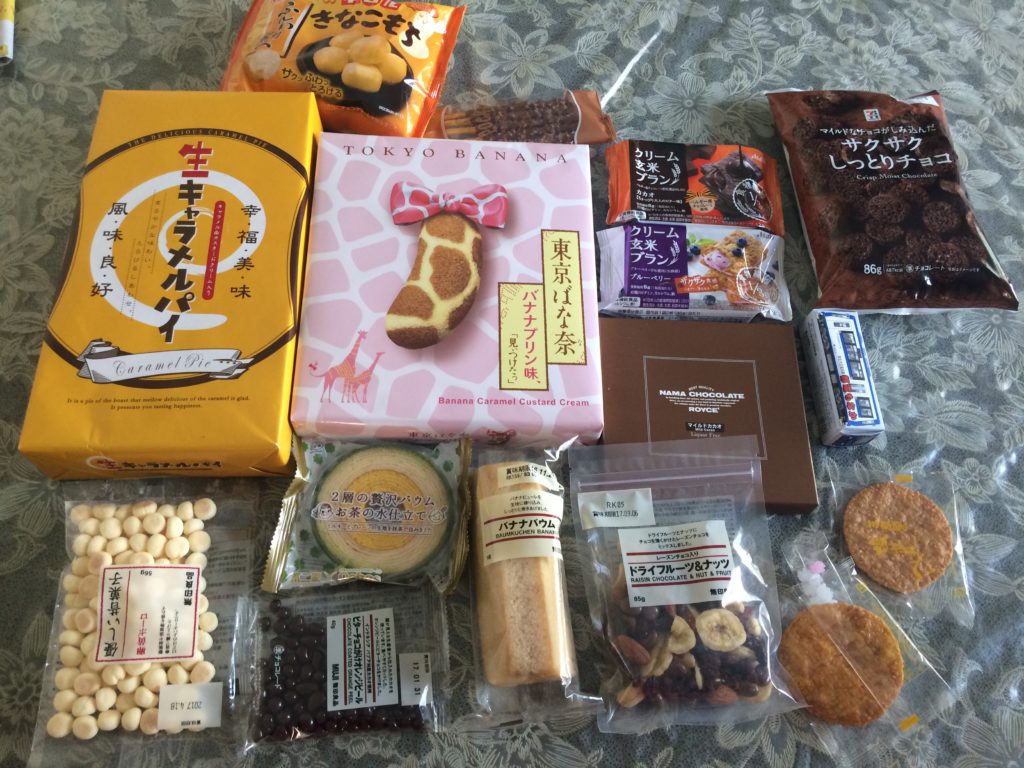
Table of Contents
Best Tokyo Souvenirs (Food Version)
Food souvenirs need to be tasted before taking them back home.
The best to try is to go to any major station and find an Omiyage store. These stores have tasting tables. So much so, that sometimes an entire floor is dedicated to tasting rounds and trying all the sweet and salty wonders Japan offers. Once you like the taste they are beautifully wrapped in boxes to carry them home safely.
Instant Ramen
If you have spent time in Tokyo, then you have definitely indulged in Ramen noodles which are like a staple food in Tokyo.
They make for a convenient food option that can be picked up from a vending machine or 7-Eleven stores, add boiling water and consume after letting it sit for a couple of minutes. These cup noodles taste as good as the actual ones in restaurants and that is why they are a must-buy Tokyo souvenirs.
They are conveniently packed in a cup that comes with a fork so easy to carry and do not take up space in the bag. If you want it to taste like a fresh ramen bowl, add preferred ingredients like fresh veggies and boiled egg while cooking.
While ramen flavouring has beef in it, there are now options for soy-flavoured vegan cup ramen. Although it is difficult to read the ingredients and know if the ramen cup you are buying is vegetarian, it is best to ask the staff about it or shop for it with a local as store staff may not be able to converse in English.
Carrying difficulty: Easy
Price: From JPY190 (approx. US$1.7)
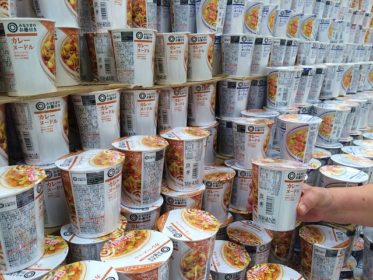
Tokyo Banana
Your search for what to buy in Tokyo ends here.
Tokyo Banana is a sponge cake with cream custard filling in different flavours that are shaped like a banana.
The classic flavour is banana cream but other variants include chocolate and caramel bananas that come with prints – flowers, leopard, hearts, strawberry, etc. This is the most popular souvenir in Tokyo because of its cuteness and deliciousness. It has a good shelf life of about a week which makes it even more tempting.
Carrying difficulty: Moderate
Price: From JPY1078 yen (approx. US$10) for a pack of 8 pieces
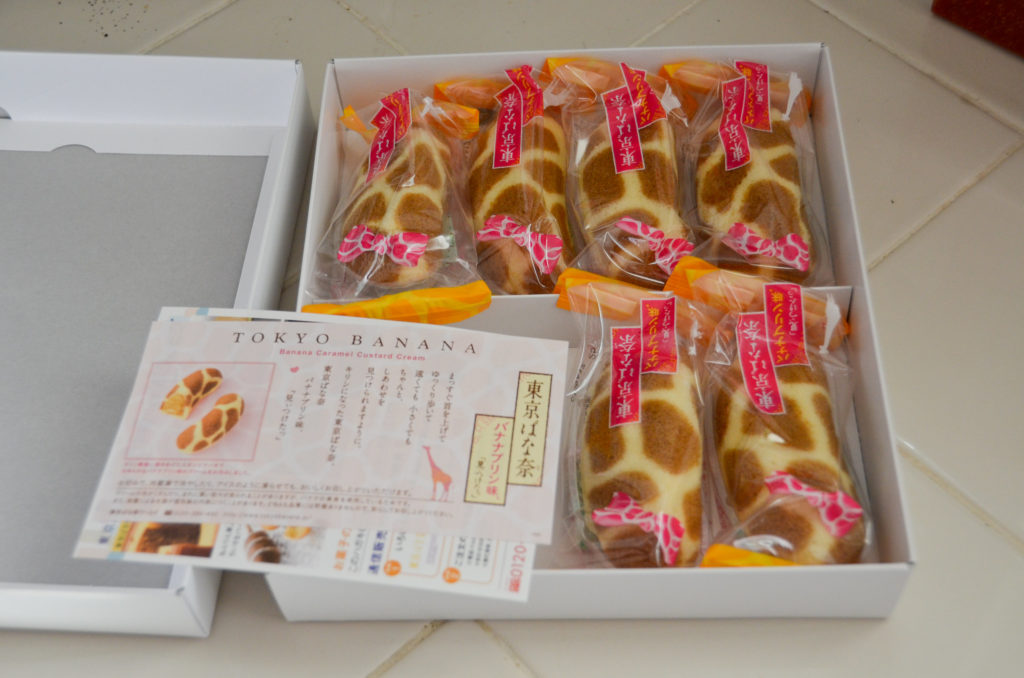
Daifuku Mochi
Daifuku mochi is a delicious confectionery.
It has a mochi (rice cake) skin wrapped around a sweet filling. The cakes are usually rolled in starch to keep them from sticking to your fingers or to each other.
The most common filling used in daifuku is the anko (red bean paste). Others include strawberry, Japanese apricot, caramel, chestnut, coffee, and many more.
It is a palm-sized cake that is generally served with Matcha tea. However, it has a low shelf life of 2-3 days if stored in a refrigerator. Store-bought dried mochi has a much longer shelf life than fresh mochi. It will last a few months at room temperature and up to a year in the freezer. Because it lasts so long at room temperature, there’s no need to refrigerate packaged mochi
Carrying difficulty: Easy
Price: From JPY1000 (approx. US$10) per pack
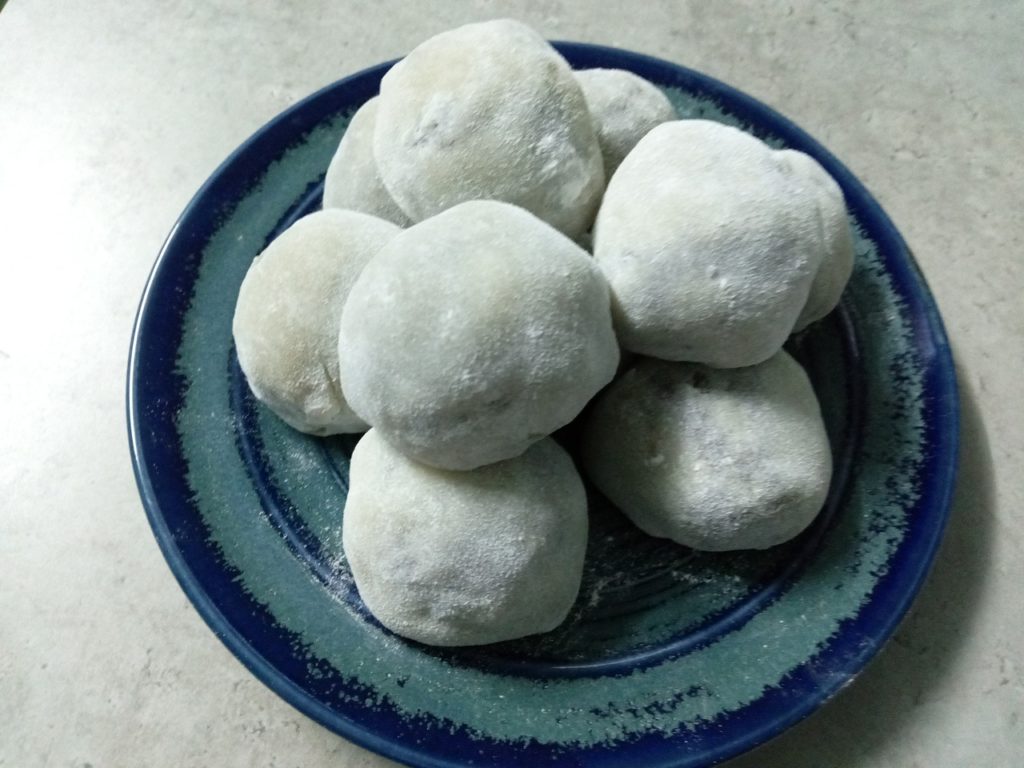
Kit Kat
Kit Kats are the most popular Tokyo souvenirs.
There are specially flavored Kit Kat bars that belong to the list of novelty souvenirs so much so that there are entire aisles of kit kats in some stores. The matcha flavor is the most popular choice.
There are over 300 flavours of Kit Kats in Japan. These include bizarre and unusual flavours such as wasabi, edamame, and durian. However, there are amazing flavours such as strawberry, apple, and rum raisin and you curse the makers for not making those for your country.
Kit Kats in Japan have special festival flavours such as Sakura (cherry blossom), Ume Sake, and Tokyo Banana.
While you get most flavors in any grocery store, special flavors can be obtained at their store at Narita airport where there is a dedicated store of Kit Kats.
Carrying difficulty: Easy
Price range: From JPY130 – 1100 (approx. US$1.14 – 10) per pack depending on sizes and flavors
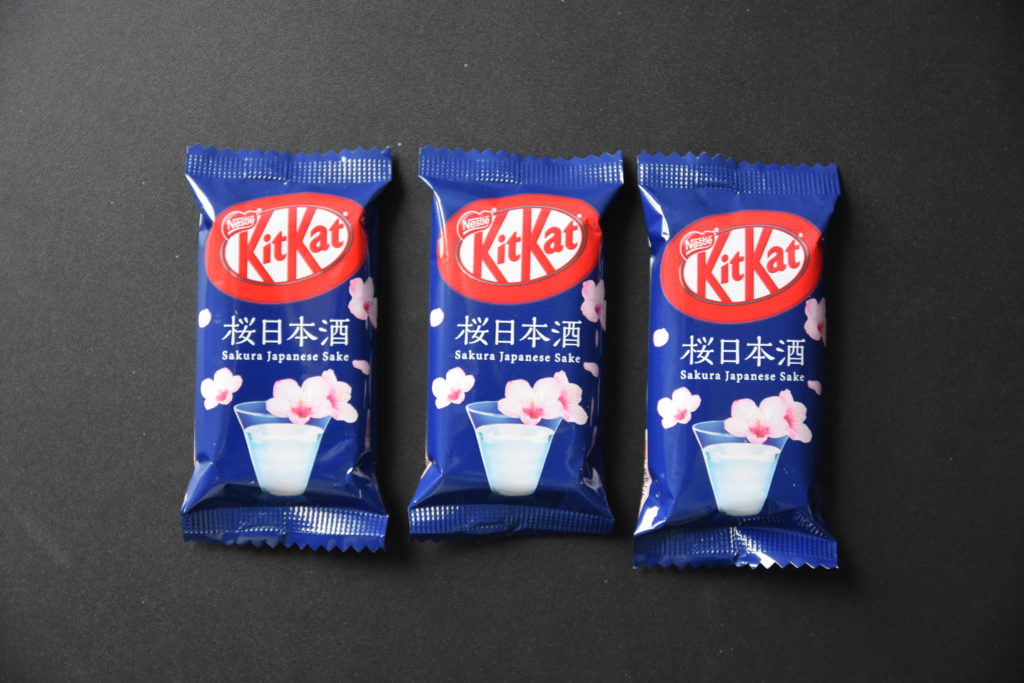
Tokyo Hiyoko Manju
If anyone wants to learn how to make food interesting they should make a run to Tokyo.
Giving cute shapes to food can really turn around a business and it is so true for Hiyoko Manju.
Hiyoko Manju, also known as Baby Chick Sweet Steamed Bun with Yellow Bean Jam is a chick-shaped pastry. The bun is a thin pastry shell that has sweet lima bean paste filling. Other flavours include salt-flavoured paste or black sugar.
Locally it is a favorite snack and has been around for more than 100 years. Tokyo Hiyoko sweets can be found at major train stations and airports.
Its shelf life is 15 days.
Carrying difficulty: Moderate
Average price: JPY650 (approx. US$6) per box (5 pieces)
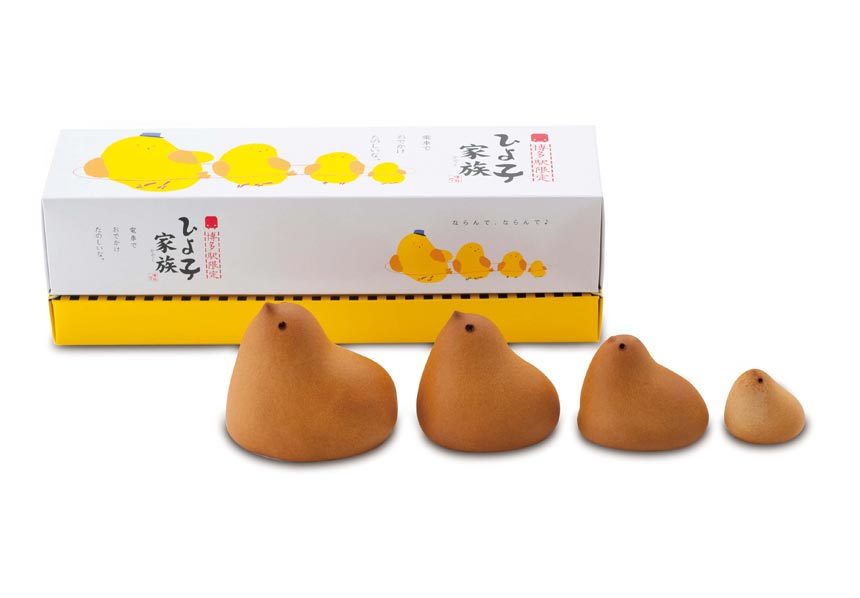
Imo Yokan
Imo Yokan is a popular Japanese dessert that is made with mashed sweet potato, agar-agar, and sugar. It looks like jelly. The sweet is usually served in rectangular bite-size slices. I had rounded pieces in Thailand and they tasted equally good!
Imo Yokan in Tokyo, being a traditional dish, is served in many places but particularly Funawa Café in Asakusa is known to be an old Japanese yokan shop that specializes in it.
Imo yokan has a normal shelf life of 7 days and tastes best when paired with green tea.
Portable level: Easy to manage
Average price: JPY650 (US$6)

Konpeito Sugar Candy
Konpeito is a traditional sugar candy that was introduced by Portuguese traders in Japan during the 16th century. The word “konpeito” comes from the Portuguese word “confeito” meaning confection or candy.
Konpeito is a small candy that comes in various colours but is unflavored.
Made using Wasanbon sugar, this candy is not only pretty, but it has a gentle sweetness. The pieces almost melt right in your mouth and are a real treat. They are perfect for party decorations or even event souvenirs. The candy is served with Matcha tea or at cafes.
It has a lengthy procedure wherein it is heated at high temperatures which is why it has an exceptional shelf life whereby it is said that, in a dry condition, it will retain its original flavour for 20 to 30 years. The long shelf life, however, is applicable only to that made by the traditional method and, generally, the shelf life for konpeito is defined as one year.
Carrying difficulty: Very Easy
Average price: JPY300 (approx. US$2.8)
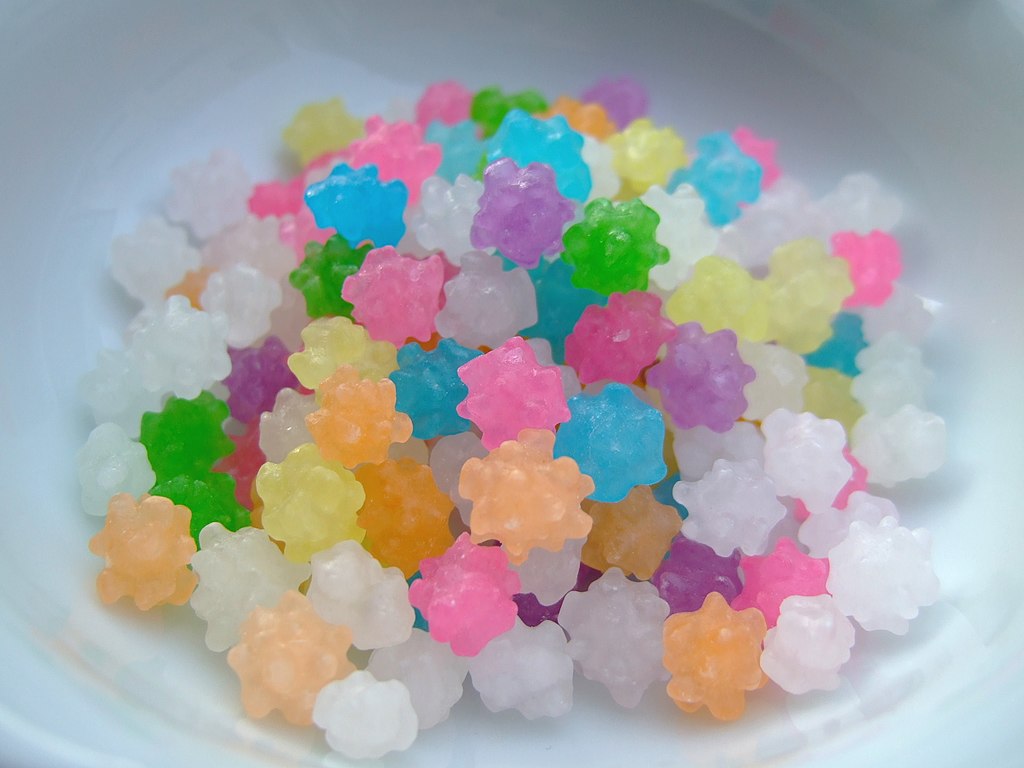
Matcha Flavored Snacks
Matcha is powdered green tea and matcha flavour is huge in Japan.
Traditionally matcha is very significant with tea ceremonies. Owing to that, green tea-flavoured snacks are a favourite among the locals. It may take some time to develop the strong, slightly bitter taste of matcha but if you like it then you will love all the matcha-flavoured snacks.
I personally did not like the flavor since I am used to subtle green tea in India, so I gave this a pass. Even at the tea ceremony, I attended, I was able to consume matcha tea only because of the presence of Konpeito.
Tokyo has overdone itself with matcha-infused candy, desserts, and snacks that you can never imagine could be matcha flavored. Sometimes it’s a hit sometimes, not so much.
At most supermarkets and convenience stores, you can find matcha green tea flavoured caramels, cookies, and chocolates available at any given time of the year. The matcha green tea KitKat is especially popular among travelers and can be purchased at stores nationwide. This is one Tokyo souvenir that you must not forget.
Carrying difficulty: Easy
Average price: JPY200-800 (approx. US$2-7)
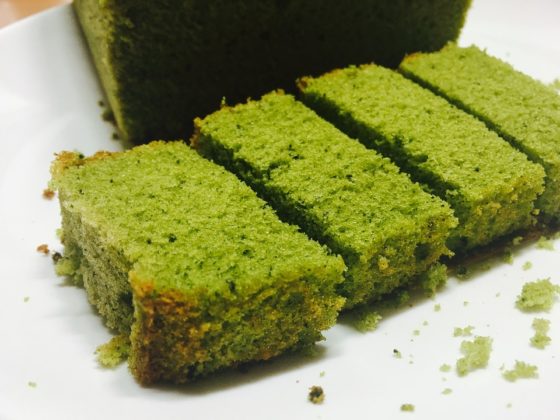
Senbei Rice Crackers
Rice is an extremely important ingredient in Japanese cuisine. Served alongside many traditional Japanese meals, it is also used to make a large variety of different foods, from sweet desserts to fermented alcoholic drinks to savory bread. One of the most prevalent types of foods made from rice are senbei.
Senbei is a type of Japanese rice cracker. They come in various shapes, sizes, and flavours, usually savoury but sometimes sweet. Senbei is often eaten with green tea as a casual snack and offered to visit house guests. It is as famous as the Banana chips of Kerala.
While traditionally Senbei was made using glutinous rice and toasted, in modern times, it is made using non-glutinous rice and baked or even fried. The crispness is addictive and it is a satisfying and healthy snack – which makes it a perfect edible souvenir from Tokyo to carry back home.
It comes in various flavors such as soy sauce, nori, sato, etc. and there are senbei made for special occasions too. It can even be paired with a hummus platter, guacamole, cream cheese, and many others depending on the flavor.
It has a long shelf life which is perfect for consumption after a few weeks. It is easily available in convenience stores. When I visited the MUJI store there was an entire aisle selling only senbei. There are small and big packs depending upon the way you want to gift.
Carrying difficulty: Easy
Average price: JPY 300-500 (approx. US$2.7 – 4.5)
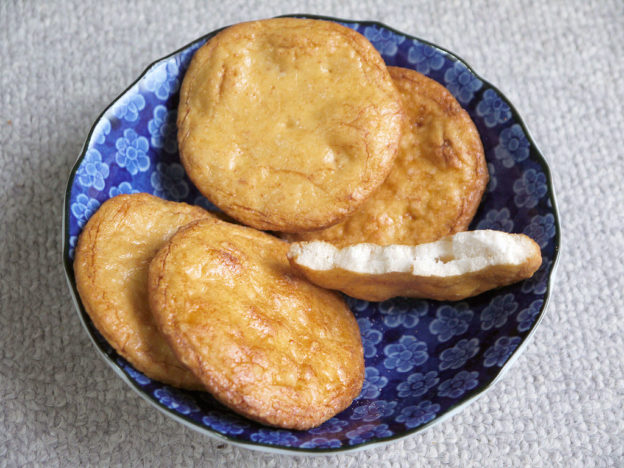
Pocky
There is no dearth of types of sweets as snacks. And these snacks make for a perfect and yummy Tokyo souvenir. Pocky is another top-selling sweet in Japan and comes in various flavours.
Pocky is a chocolate-coated biscuit stick, and one of the most popular Japanese snacks of all time. Although I have seen Pocky in 7-eleven stores in Thailand and Vietnam, the range of flavours is only available in Japan.
Small packs of Pocky are available in matcha, strawberry, milk, banana, cookies and cream, coconut, honey, and mousse flavours other than the regular chocolate flavour.
However, the Giant Pocky which is very regional has flavours such as Hokkaido Yubari Melon, Uji Matcha Tea, and Shunshu Kyoho Grapes. Giant Pocky is 10 inches longer than the usual chocolate Pocky and its diameter is 3 times bigger.
Carrying difficulty: Very Easy
Average price: JPY 150 – 300 (approx. US$1.3 – 3) for a small box and JPY 850 – 1,050 (approx. US$7.9 – 10) for a giant pack.
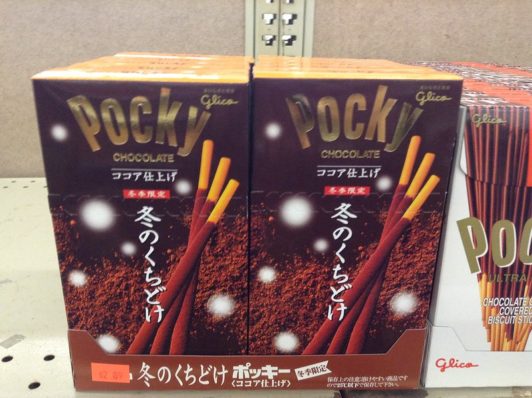
Sake
Sake is Japanese rice wine and is one of the must-buy Souvenirs from Tokyo.
Just like all wines, it takes time to develop a taste for Sake and finally decide which one you like before taking it back home.
Sake bottles have numbers on them that indicate “sake meter value” or SMV, which indicates to an extent how sweet or dry sake is. A number of -1.4 to +1.4 is considered relatively neutral. Anything in the negatives will be sweeter while anything in the positives will be dry.
Sake comes in many sizes, small bottles containing 360 ml or the large bottle containing 1800 ml which is the standard sake bottle size. Sake is available in liquor stores, department stores, or the alcohol section in supermarkets. Even Narita airport has a liquor store selling sake where you can taste and buy it.
Sake has a great shelf life. An unopened bottle can be easily stored for up to 2 years while an opened bottle needs to be refrigerated and consumed within 2-3 weeks.
Carrying difficulty: Difficult. Since it is a glass bottle, it needs proper packaging with bubble wrap to avoid spilling in checked-in luggage of a flight.
Average price: JPY 1,800-10,500 (approx. US$16 – 95)
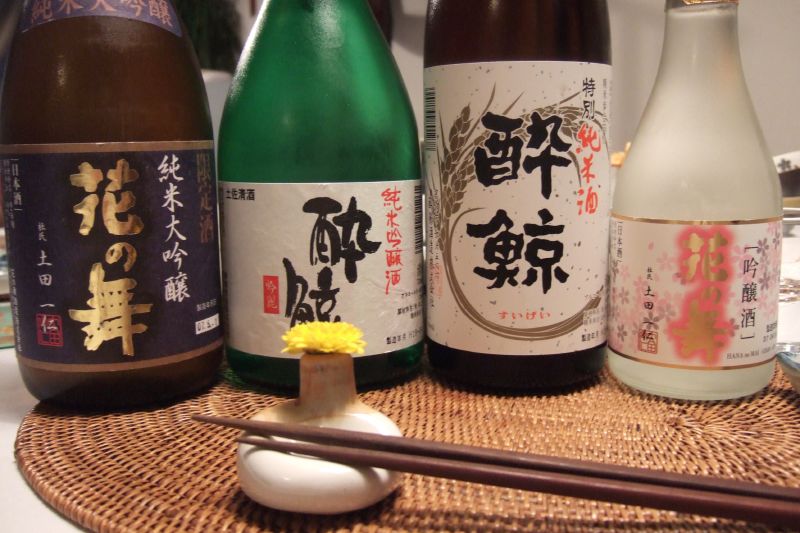
Umeshu
Umeshu is a traditional Japanese liqueur made from ume fruit.
Ume is a locally grown green plum. Ume plums (unripe) are steeped in liquor and sugar. A perfect balance between ume extract and alcohol is achieved by aging the fruit, with the seed still inside.
The delicious tang of Umeshu comes from the citric acid in the fruit, and the refreshing flavour stimulates the appetite. This is a sweet drink and is often used as dessert liquor which is why it is liked by all. As it has less alcohol content ( 10–15%), it is a preferred choice of beverage while having food.
Umeshu, or plum wine, has a rich, sweet, and fruity quality that makes it a great souvenir for those who like sweeter liquors. Popular brands of umeshu are CHOYA, Toko Ginjo Umeshu, Shiraume no Niwa, Nakata Umeshu Taru, and Hanzo Umeshu. It can be found in liquor stores, supermarkets, and even convenience stores. Sometimes it is packed in tetra packs as against the glass bottles, which makes it easy to carry in luggage.
It has a high shelf life but it’s better to refrigerate after opening the bottle/tetra pack.
Carrying difficulty: Moderate
Average price: JPY 1,500-3,900 (approx. US$11 – 34)
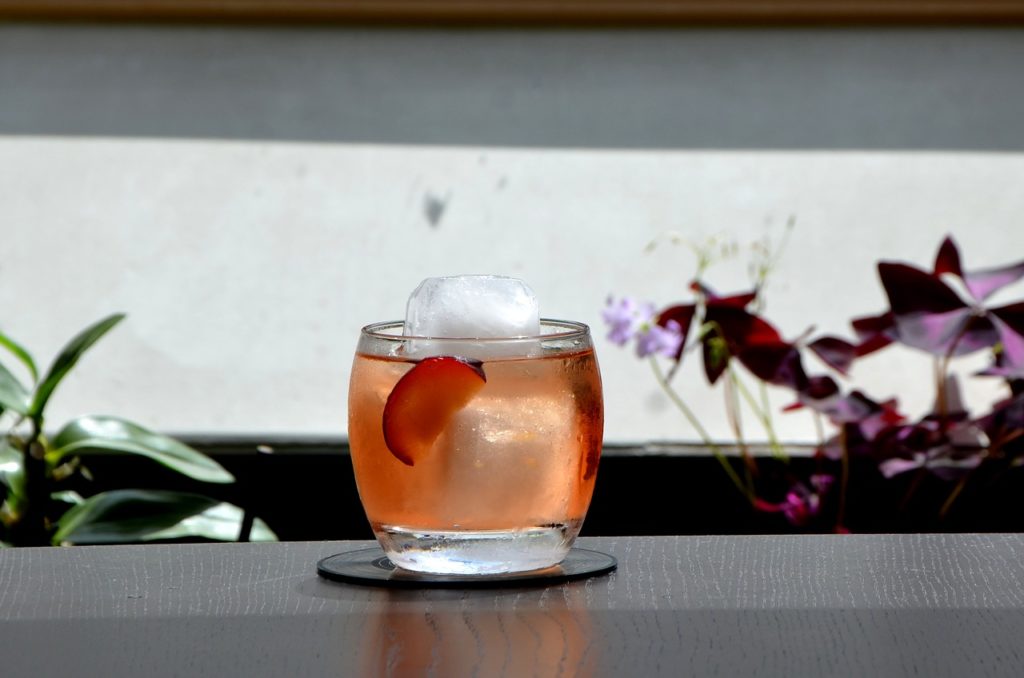
Sustainable tips for Tokyo Souvenirs
- Try to sample a souvenir before buying. It shouldn’t go to waste. Try to read the instructions/ingredients (some of the packets have English text) so that you don’t pick up non-vegetarians or items that may cause allergic reactions. Ask for help from the staff.
- Carry a bag while shopping and avoid plastic bags.
- Encourage shopkeepers to pack fragile items in a newspaper instead of bubble wrap.
Love Collecting Souvenirs? Check out some more articles:
Affordable souvenirs from Vietnam
Easy to pack souvenirs from Jaipur, India
Disclaimer – This post may contain affiliate links. It means it adds no extra cost to you if you book through the link but I get a referral bonus which helps me earn a little to keep this website up and running. For more details please read my Privacy Policy.
Pin this post!
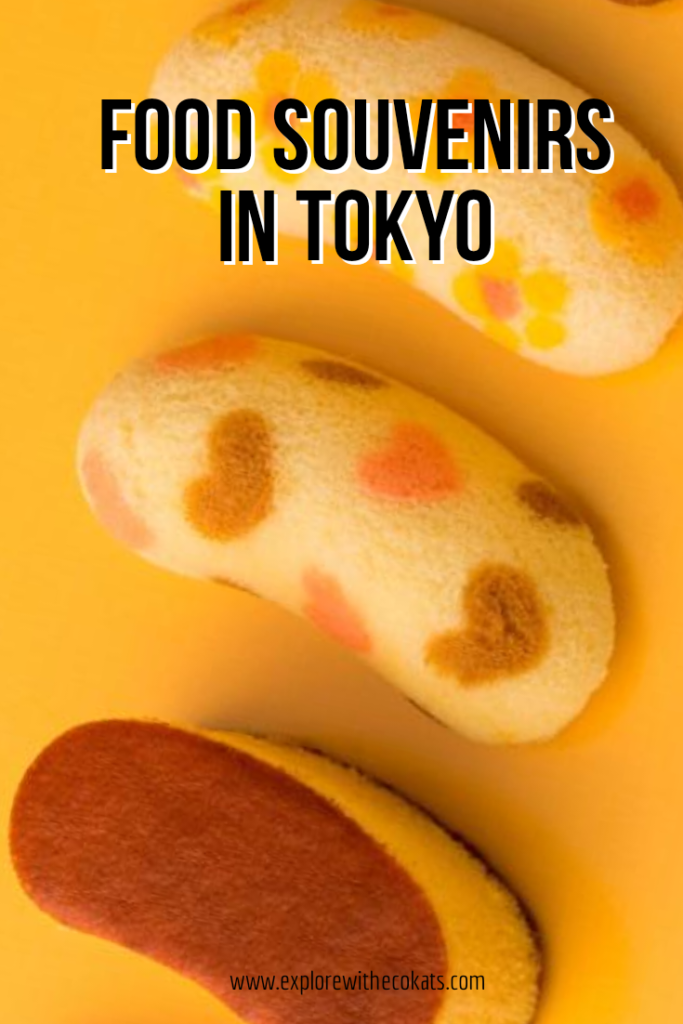
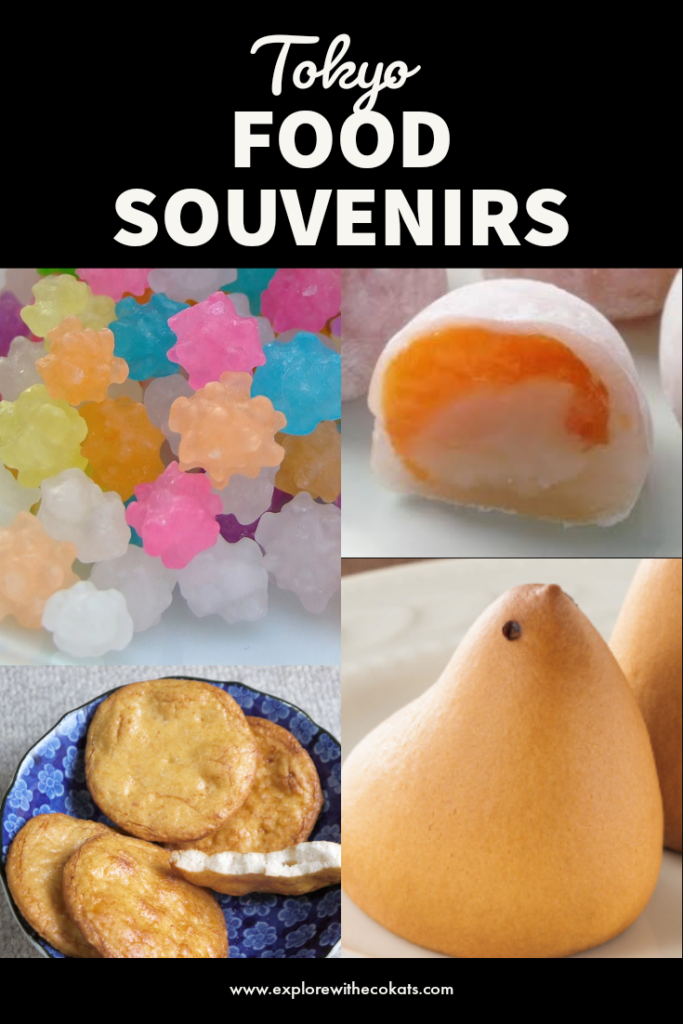

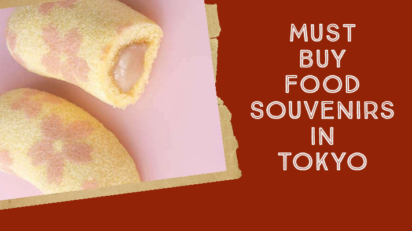
3 comments
I’ve actually seen quite a few different flavours of Kit Kats coming out of Toyko from my friends, but I didn’t know they were the most popular food souvenirs! I’d love to try out some of these other food items as well at some point.
What a fabulous idea for an article! And I totally agree with you that it’s wrong that we don’t have all those Kit Kat flavors in our home countries–or maybe that’s good cause I’d eat them all!
[…] Mochi is often served as a central part of the Japanese New Year celebration and is used in religious rituals in the Shinto religion. However, nowadays it is available as a snack on streets of most Japanese cities. Also available in convenience stores making it a perfect Tokyo Food Souvenir. […]